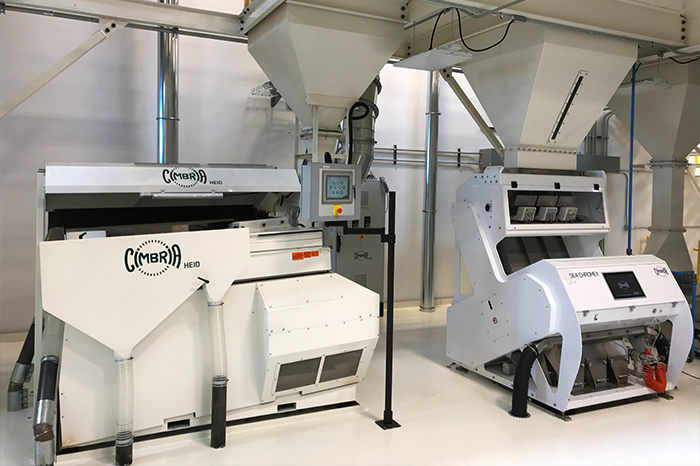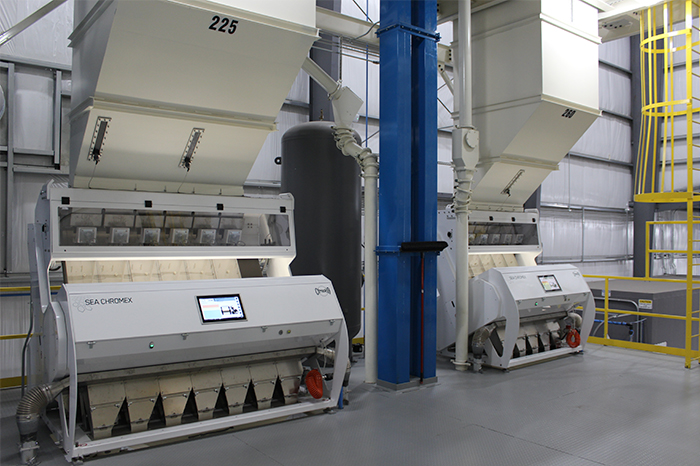/RP_00022-16%20copy-1440x960.jpg)
Color is incredibly important when it comes to food. The color of a piece of food will immediately send subliminal signals to the brain that will determine how appetizing the brain will find this particular piece of food.
This is part of why sorting out off-colors in food is so important. In addition to this, color sorting also has an impact on quality and the presence of non-food debris. It is an important, yet underrated, step in the food production process.
So, what exactly is the role of color sorting in food production? How does it impact the final product? Read on to discover the answers to these questions and more!
What is Color Sorting?
Color sorting is exactly what it sounds like. It involves taking a crop and sorting it by color. In modern production, this means using an advanced color sorting machine can quickly and automatically achieve this goal. This machine uses cameras to look at a crop and perform optical sorting. These are high-quality cameras that capture a range of colors and fine details.
These cameras are then programmed to look for specific features in specific crop harvests. They are fine-tuned to the exact color the crop should look like and, thus, know exactly what the crop should not look like. This determination is made in almost no time at all.
Crop sorting machines are also equipped with attachments that will expel rejected colors. Once the optical sorting finds something that does not match the color parameters, it expels it. This immediately removes the rejected items from the production process and prevents them from being included in the final product.
Why is Color Sorting Important?
Now that you understand what color sorting is, it is important to understand why it is necessary. This seemingly simple process has a big impact on the overall production of food goods.
First off, color sorting can help remove non-food materials. When crops are harvested, there is always a chance that lower-quality goods make their way into the sorting system. This includes small rocks, plant debris, or even pieces of trash or plastic that blew into the field. To minimize the amount of non-color sorted byproduct that makes it through production, color sorting technology should be preceded by sorting equipment such as density separators or size and length graders.
Color sorting is intended to eliminate bad or low-quality food as well. Luckily, bad and low-quality crops typically have a visual difference. This means that the color sorter is able to look for that difference and remove the offenders. In a similar way, color sorters are able to remove foods infected by disease or parasites. These problems have a visual indicator, which the color sorter is capable of targeting. These can be identified through discoloration, and patterns, and even doing so, prevents these negative features from making it into the final product.
The Advantage of Automated Color Sorting
Decades ago, crop sorting was done by hand. Now, automated machines are able to improve the process in ways that humans never could.
For one, a vision-based sorter is incredibly fast. Most steps in the process appear to be instantaneous when viewed by the human eye. The complex calculations achieved by these machines are finished in fractions of a second. A machine optical sorter also does all of this with an incredible level of accuracy. One study found that, when sorting different color corn crops, color sorters often achieved nearly 100% accuracy. This means that the machines are effective as well as fast.
In some cases, this is a greater level of accuracy than a human would be capable of. Eliminating human error is a big feature of color sorting. By doing so, they sort out the harvest in a way humans would be unable to.
The Role of Color Sorting in Production
Color sorting is a key feature of agriculture production that is becoming more and more important as the years go by. It helps eliminate low-quality, damaged, or objectionable crops from a harvest and prevents them from going to market. This produces a harvest that is more agreeable for both the producer and consumer.
Bratney leverages the unmatched accuracy and capacity of Cimbria color sorters to sort seeds, grains, foods, and industrial products. These color sorters are designed with multiple camera technologies capable of handling complex color sorting applications.
Let's Talk
We want to help you find the right fit for your next color sorting system. Reach out to our team to discuss your needs so we can help you discover the right equipment for you.


